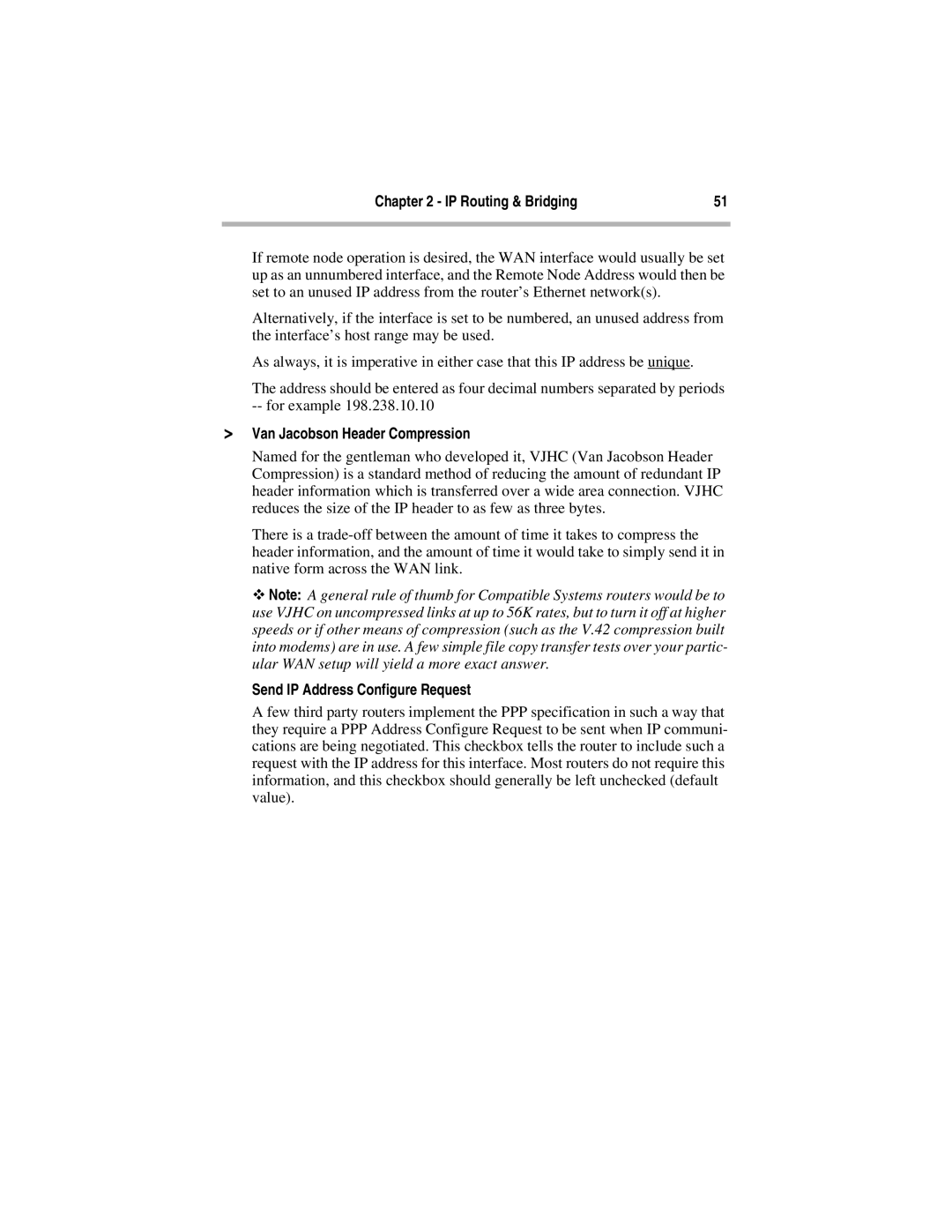Chapter 2 - IP Routing & Bridging | 51 |
|
|
If remote node operation is desired, the WAN interface would usually be set up as an unnumbered interface, and the Remote Node Address would then be set to an unused IP address from the router’s Ethernet network(s).
Alternatively, if the interface is set to be numbered, an unused address from the interface’s host range may be used.
As always, it is imperative in either case that this IP address be unique.
The address should be entered as four decimal numbers separated by periods
>Van Jacobson Header Compression
Named for the gentleman who developed it, VJHC (Van Jacobson Header Compression) is a standard method of reducing the amount of redundant IP header information which is transferred over a wide area connection. VJHC reduces the size of the IP header to as few as three bytes.
There is a
ϖNote: A general rule of thumb for Compatible Systems routers would be to use VJHC on uncompressed links at up to 56K rates, but to turn it off at higher speeds or if other means of compression (such as the V.42 compression built into modems) are in use. A few simple file copy transfer tests over your partic- ular WAN setup will yield a more exact answer.
Send IP Address Configure Request
A few third party routers implement the PPP specification in such a way that they require a PPP Address Configure Request to be sent when IP communi- cations are being negotiated. This checkbox tells the router to include such a request with the IP address for this interface. Most routers do not require this information, and this checkbox should generally be left unchecked (default value).
